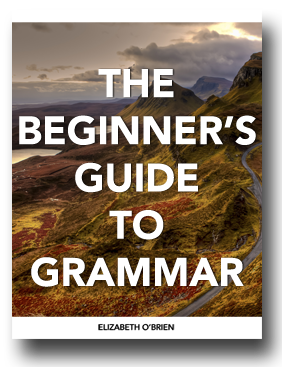Download your free grammar guide here.
Download your free grammar guide here.
Chapter 6: Diagramming Transitive Active Verbs (Direct & Indirect Objects)
Chapter 6: Diagramming Transitive Active Verbs
(Direct & Indirect Objects)
- Home
- How to Diagram
- Diagramming Transitive Active Verbs
You'll learn about two of the four types of verbs with these sentence diagramming exercises.

In the previous five chapters, you have been diagramming the same type of verb (intransitive complete). There are four types of verbs, and now it's time for you to learn about the others! In this chapter, you'll learn about another type of action verb, the transitive active verb.
Your Mini Lesson on Transitive Active Verbs
The direct object in that sentence is ball. The ball is receiving the action of kicked. It is what is being kicked.
Find the direct object in the following sentence.
Since wood is receiving the action of chopped, it is the direct object. It is being chopped.
The indirect object in that sentence is me. The word me is receiving the direct object ball. Who is getting the ball? Me!
Find the direct object and the indirect object in the following sentence.
Book is receiving the action of the verb gave, so it is the direct object. The word you is receiving the direct object, so it is the indirect object.
Direct objects and indirect objects only occur with transitive active verbs. TRANSitive active verbs are verbs that TRANSfer their action to direct objects.
If a sentence has a direct object, it also has a transitive active verb. If a sentence has an indirect object, it also has a direct object.
For more information on these types of verbs, see this page.
Are you ready to diagram? You can do this! The answers are at the bottom of the page. When you finish, you'll be ready to learn about the other two types of verbs!
6.0 Diagramming Direct Objects
Diagram direct objects on the same horizontal line as the subject and the verb.
Separate the verb and the direct object with a vertical line that doesn't go below the horizontal line.

The baby kicked the ball.
Directions: Diagram the following sentences. Use the example diagram above for help.
1. Does your sister like black cats?
2. A boy on your basketball team just dunked the ball.
3. Wow! You will run a marathon on Sunday?
4. My dad videotaped me during the play.
5. The sick English teacher blew her nose.
6.1 Diagramming Indirect Objects
Indirect objects are diagrammed in kind of a funny way. Before I show you how they are diagrammed, look at this sentence:
The baby kicked the ball to me.
This sentence has transitive active verb (kicked), a direct object (ball), and a prepositional phrase (to me).
The word me is the object of the preposition to.
There is another way we can say that sentence without the word to.
The baby kicked me the ball.
This sentence still has a transitive active verb (kicked) and a direct object (ball), but there is no prepositional phrase.
Now, the word me is an indirect object instead of an object of the preposition!
When you diagram indirect objects, diagram them underneath the verb as if they were objects of the preposition. Put an (x) where the preposition would go.

The baby kicked me the ball.
Directions: Diagram the following sentences. Use the example diagram above for help.
1. Could you bake me a cake?
2. Nate bought his mother flowers.
3. Arrg, the bookstore sent me the wrong book!
4. Caroline and Mike gave Emilie a birthday card.
5. The woman handed Alex a new passport.
6.2 Diagramming Compound Direct & Indirect Objects
Coordinating conjunctions can make direct and indirect objects compound.
Diagramming Compound Direct Objects

The baby kicked the ball and the toy.
Diagramming Compound Indirect Objects

The baby kicked Elmo and me the ball.
Directions: Diagram the following sentences. Use the example diagrams above for help.
1. I smelled the delicious homemade pie and cookies.
2. Yikes! The tornado violently hit the house and threw the trees across the field.
3. The guests gave Mary a book about Germany, and she gave them a photo of her town.
4. I reluctantly gave Edward and Bella the keys to my car.
5. My friend and I walked into the woods and picked Sara flowers.
6.0 Diagramming Direct Objects - Answers
Get these answers in the ebook!
Would you like to download these sentence diagramming exercises?
- 121 Pages
- Ebook, Instant Download
- Includes Instructions & Exercises For Diagramming Subjects, Verbs, Adjectives, Adverbs, Prepositional Phrases, Conjunctions, Interjections, Adverb Clauses, Adjective Clauses, Noun Clauses, Gerunds, Participles, & Infinitives
- Includes All Answers
- Printable
- 100% Money-Back Guarantee
- Only $19
6.1 Diagramming Indirect Objects


6.2 Diagramming Compound Direct & Indirect Objects
Get these answers in the ebook!
Would you like to download these sentence diagramming exercises?
- 121 Pages
- Ebook, Instant Download
- Includes Instructions & Exercises For Diagramming Subjects, Verbs, Adjectives, Adverbs, Prepositional Phrases, Conjunctions, Interjections, Adverb Clauses, Adjective Clauses, Noun Clauses, Gerunds, Participles, & Infinitives
- Includes All Answers
- Printable
- 100% Money-Back Guarantee
- Only $19
>> Move On To Chapter 7: Diagramming Linking Verbs & Passive Verbs
I am studying for the GMAT and have found your website and diagramming ebooks to be invaluable!
- Karen-Kim, Student
This is original content from https://www.english-grammar-revolution.com/types-of-verbs.html
Our Free Guide Gives You A Fun Way
To Teach And Learn The Basics v

Elizabeth O'Brien is the creator of Grammar Revolution.
Her lessons are guaranteed to give you more confidence in your communication skills and make you smile. :)



